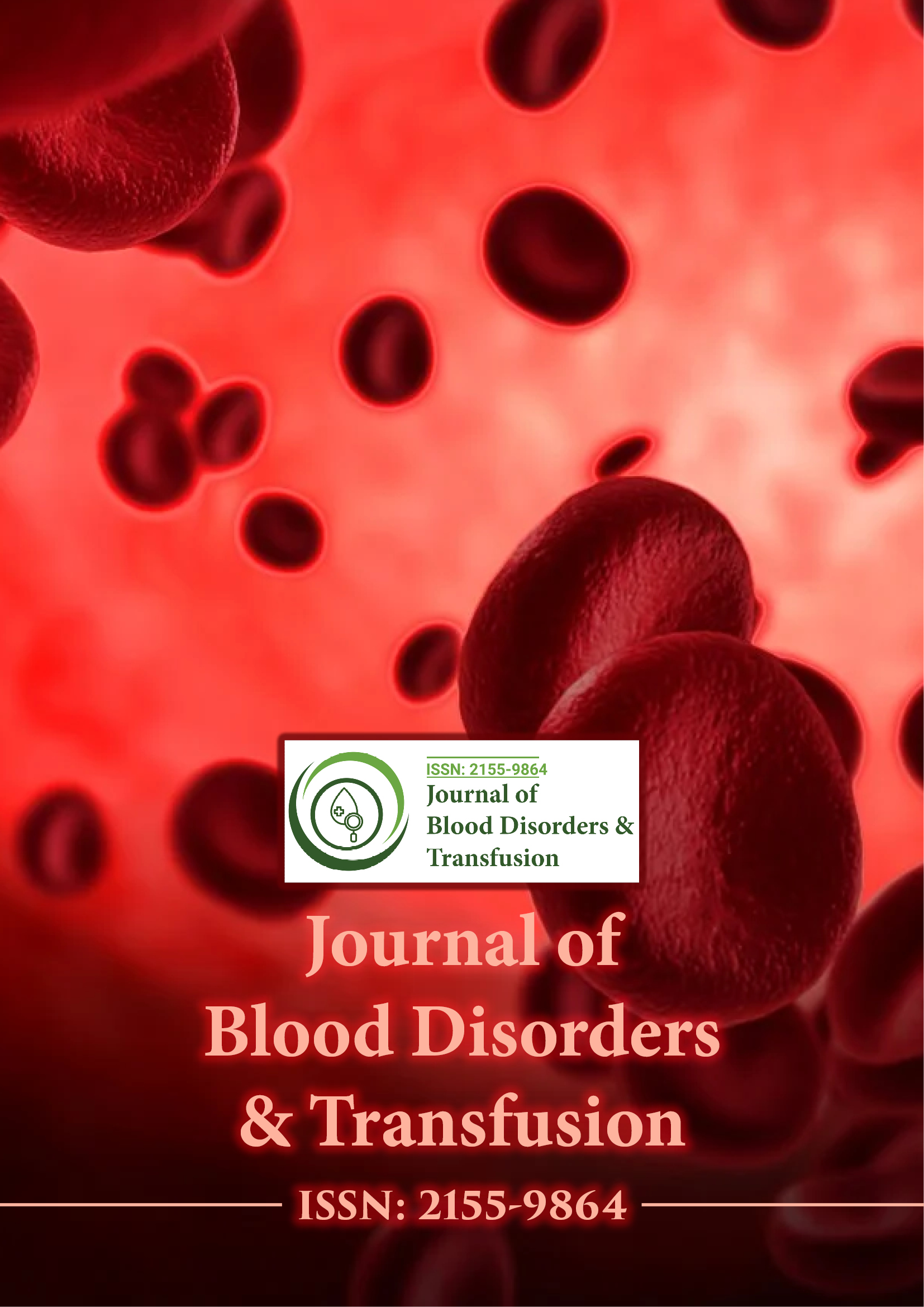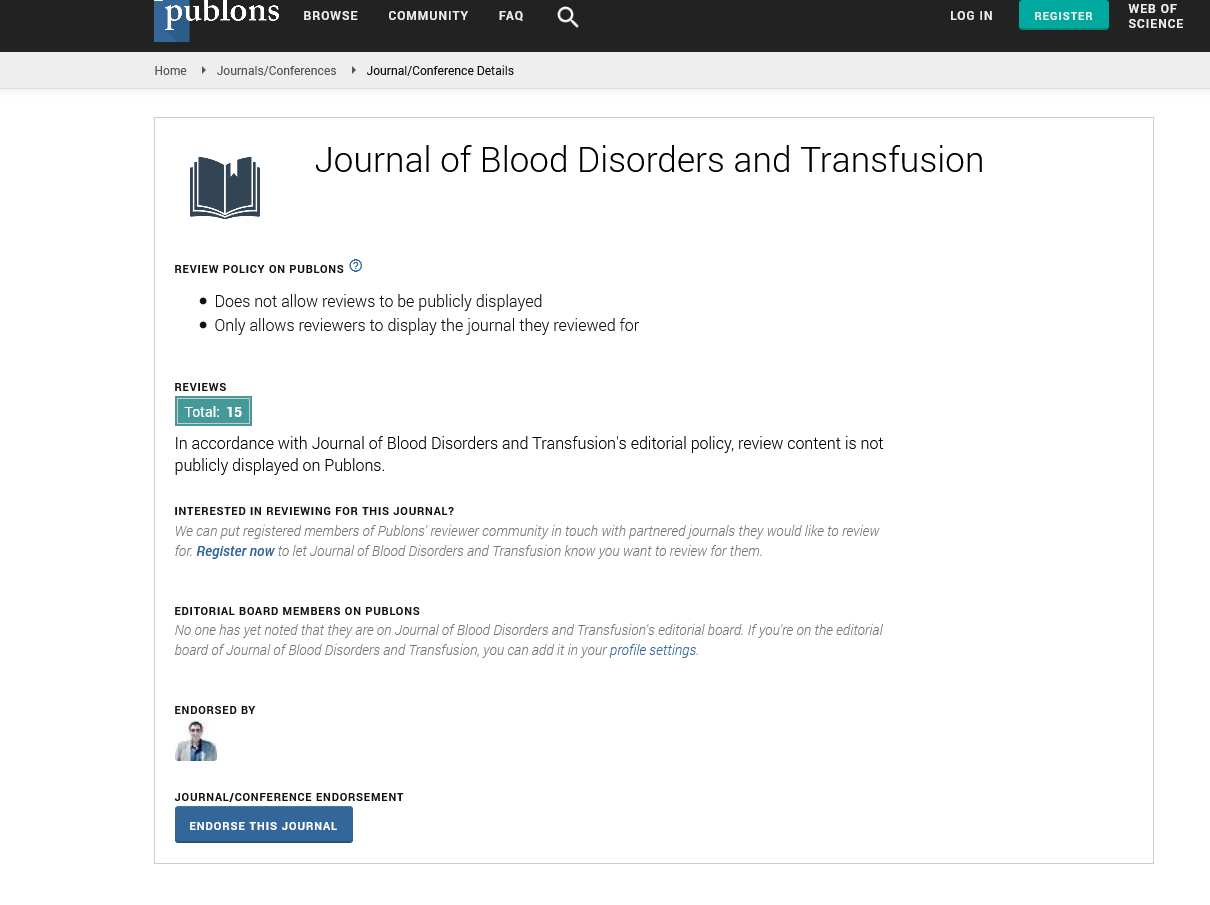Indexed In
- Open J Gate
- Genamics JournalSeek
- JournalTOCs
- Ulrich's Periodicals Directory
- RefSeek
- Hamdard University
- EBSCO A-Z
- OCLC- WorldCat
- Proquest Summons
- Publons
- Geneva Foundation for Medical Education and Research
- Euro Pub
- Google Scholar
Useful Links
Share This Page
Journal Flyer

Open Access Journals
- Agri and Aquaculture
- Biochemistry
- Bioinformatics & Systems Biology
- Business & Management
- Chemistry
- Clinical Sciences
- Engineering
- Food & Nutrition
- General Science
- Genetics & Molecular Biology
- Immunology & Microbiology
- Medical Sciences
- Neuroscience & Psychology
- Nursing & Health Care
- Pharmaceutical Sciences
Commentary - (2022) Volume 13, Issue 2
A Brief Note on Circulatory System and Blood Vessels
Julien Elsie*Received: 07-Feb-2022, Manuscript No. JBDT-22-15489; Editor assigned: 09-Feb-2022, Pre QC No. JBDT-22-15489 (PQ); Reviewed: 21-Feb-2022, QC No. JBDT-22-15489; Revised: 25-Feb-2022, Manuscript No. JBDT-22-15489 (R); Published: 28-Feb-2022, DOI: 10.4172/2155-9864.22.13.489
Description
The circulatory system or cardiovascular system pumps blood from the heart to the lungs to supply oxygen. The heart then sends oxygen-rich blood through the arteries to the rest of the body. The veins return the deoxygenated blood to the heart and resume circulation. The circulatory system is important for healthy organs, muscles and tissues. The heart and blood vessels make up the circulatory system. The main function of the circulatory system is to deliver oxygen, nutrients and hormones to the muscles, tissues and organs of the whole body. Another part of the circulatory system is removing waste products from cells and organs so the body can dispose of it. The heart pumps blood around the body through a network of arteries and veins (blood vessels). The circulatory system can also be defined as the cardiovascular system, where cardio means the heart and vascular refer to blood vessels. The circulatory system supplies blood to all body tissues and enables them to function. The function of the circulatory system is to move blood throughout the body. This blood circulation keeps your organs, muscles and tissues healthy and keeps you alive. The circulatory system also helps your body get rid of waste products. This waste includes:
• Carbon dioxide from breathing (breathing).
• Other chemical by-products from your organs.
• Waste things from what you eat and drink.
The parts of your circulatory system are:
• The heart, a muscular organ that pumps blood throughout the body.
• Blood vessels, including arteries, veins and capillaries.
• Blood, which is composed of red blood cells, white blood cells,plasma and platelets.
Circulatory System Circuits
There are three circuits in the circulatory system. Blood circulates in a continuous pattern through your heart and the type circuits are:
Pulmonary circuit
This circuit carries oxygen-free blood from the heart to the lungs. The pulmonary veins return oxygen-rich blood to the heart.
Systemic circuit
This circuit carries blood, oxygen, nutrients and hormones from the heart to the rest of the body. In the veins, the blood absorbs waste products and the body uses oxygen, nutrients and hormones.
Coronary circuit
Coronary arteries refer to the arteries of your heart. This circuit supplies the heart muscle with oxygen-rich blood. The coronary circulation then returns the deoxygenated blood to the upper right chamber (atria) of the heart, where it is sent to the lungs for oxygenation.
Blood Vessels and Types
Blood vessels are channels that carry blood throughout the body. They form a closed loop like a cycle that begins and ends in your mind. Together, cardiovascular and blood vessels make up your circulatory system. The body has about 60,000 miles of blood vessels. There are three main types of blood vessels:
Arteries
Arteries are thin, muscular tubes that carry oxygen-rich blood from the heart to all parts of the body. The aorta is the largest artery in the body. It starts at the heart, goes up the chest (ascending aorta), and then into the stomach (descending aorta). The coronary arteries branch off from the aorta, which branches into smaller arteries (arterioles) as they move away from the heart.
Veins
These blood vessels return deoxygenated blood to the heart. Veins start small (venules) and grow larger as they approach the heart. Two central veins supply blood to the heart. The superior vena cava carries blood from the upper body (head and arms) to the heart. The inferior vena cava carries blood from the lower body (stomach, pelvis, legs) to the heart. The veins in the legs have valves that prevent blood from flowing back.
Capillaries
These blood vessels connect very small arteries (arterioles) to veins (venules). The thin walls of the capillaries allow oxygen, carbon dioxide, nutrients and waste products to enter and leave the cells.
Citation: Elsie J (2022) A Brief Note on Circulatory System and Blood Vessels. J Blood Disord Transfus. 13:489.
Copyright: © 2022 Elsie J. This is an open-access article distributed under the terms of the Creative Commons Attribution License, which permits unrestricted use, distribution, and reproduction in any medium, provided the original author and source are credited.

